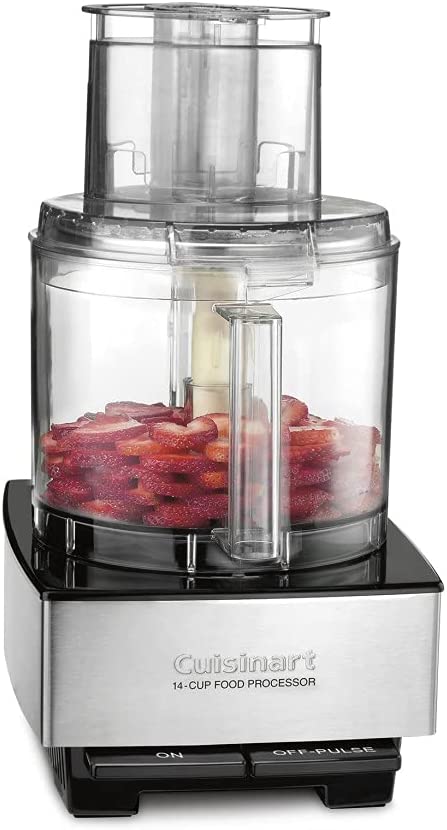Have you ever wondered why restaurant pizza has a sweet fermented taste? It is because they prepare their pizza dough using a poolish. So, stick around as we discuss how to make a poolish for pizza dough at home to achieve that restaurant pizza taste. After all, pizza made from poolish has a lovely texture and tastes better than when using regular dough.
What Is Poolish?
Poolish is a pre-ferment that leavens the dough and increases its gluten content to make it flavorful and soft. People confuse it with a sourdough starter, but a poolish has a sponge-like texture and uses store-bought yeast during fermentation. On the other hand, a sourdough starter is made using natural yeast.

Image Credits: dishcrawl.com
Poolish is a French baking ingredient that is not normally used to prepare Neapolitan pizza since it gives out a risen pizza crust. Pizza dough with poolish is sweeter and has more complex aromas than without. In addition, using it in your dough gives the yeast extra fermentation time, thus developing more flavors.
This long fermentation period enables the yeast to break down more scratches in the flour, making the dough more digestible. It also gives the gluten extra time to develop. In short, when you leave the poolish pizza dough for a while, the gluten develops naturally through hydration, giving you an easy kneading time.
How To Measure Poolish for Your Pizza Dough
Making pizza dough with poolish is easy since there is no complicated math in measuring your ingredients. You should use a baking scale to measure your ingredients. However, if you don’t have a baking scale, you can choose from our compilation of the 15 best baking scales that will give you accurate measurements.
Poolish is a 1:1 ratio of water to flour or 100% hydration level to 0.25% yeast. For instance, if you make 600 grams of poolish, mix 300 grams of water with 300 grams of flour and 0.745 grams of dry yeast.
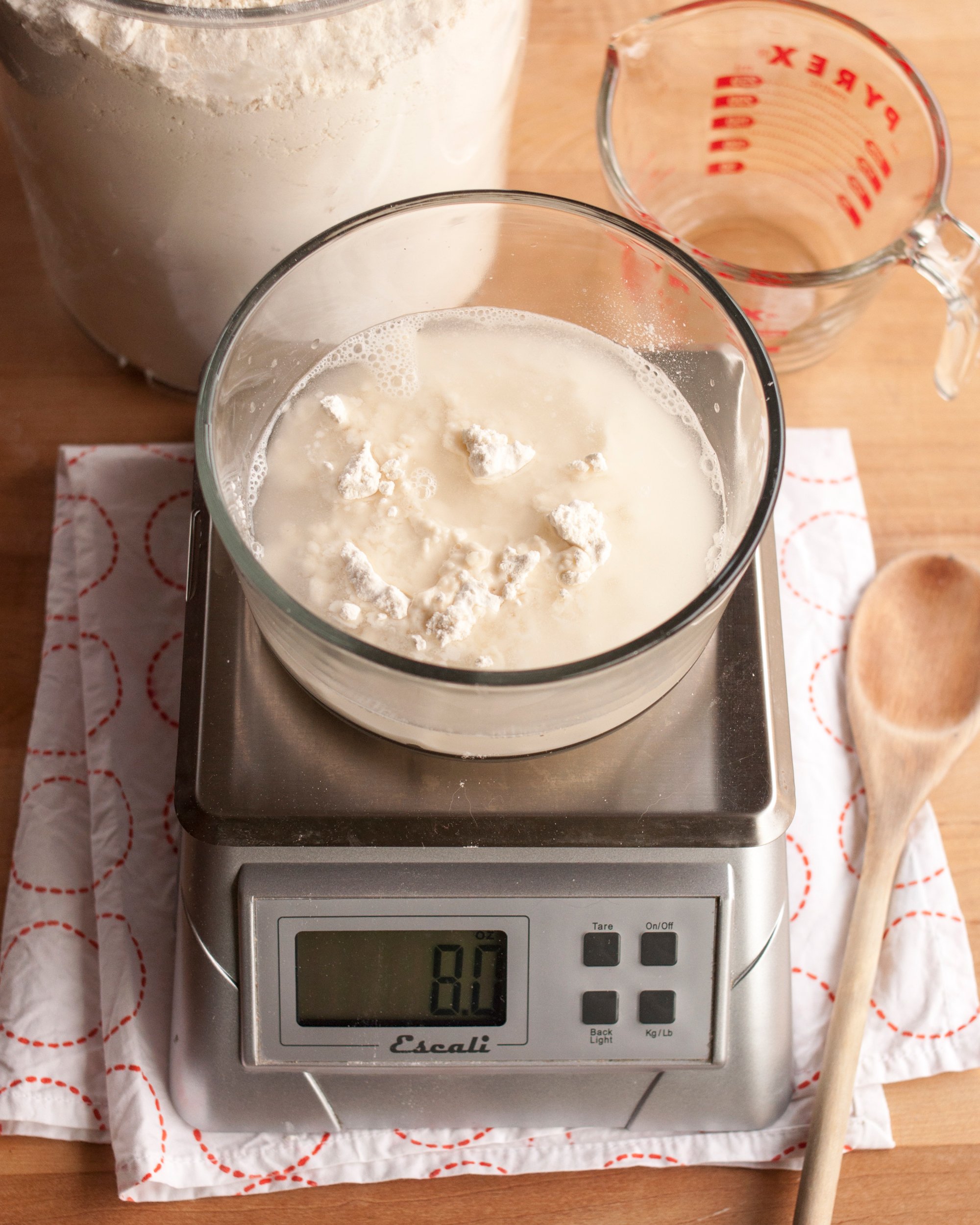
Image Credits: thekitchn.com
You can add a small amount of honey(optional). It would be best to leave the poolish to ferment at room temperature for 1-2 hours and transfer it to a refrigerator for another 18-24 hours.
When your poolish is ready, add it to your fresh pizza dough. Poolish takes 25% of the total volume of your dough. Making this ingredient requires simple math. For instance, let’s say you make pizza dough using 1kg of flour and 700 ml of water. For your dough to have 25% poolish content, you must add 250 grams. That means your poolish will contain 125 grams of water and 125 grams of flour added with yeast, olive oil, and honey.
If you are using a poolish pizza dough recipe, you don’t have to include yeast in your dough-making process since the poolish has already been fermented. Instead, you can make pizza dough balls and leave them to proof before you start baking.
How To Make Poolish

Image Credits: theflavorbells.com
Ingredients
- 100g of flour ( bread flour or all-purpose)
- 100g of room-temperature water
- 1/4 tsp of active dry yeast
- 1/4 tablespoon of honey(optional)
Instructions
- Pour the 100g of water into a mixing bowl.
- Add yeast and honey to your water and mix thoroughly.
- Add flour to the bowl until the mixture is fully incorporated and you are left with an extremely wet dough resembling pancake batter.
- Transfer the mixture into a resealable container and cover it with an airtight lid.
- Let the mixture sit for an hour before its rises.
- Transfer the poolish into a refrigerator for cold fermentation and let it sit overnight.
- The poolish can take about 2-7 days to ferment, depending on how cold your fridge is. You can still leave it for longer, as it will change the taste of your pizza crust due to the extended fermentation period.
- After 7 days, you can use your poolish to make your pizza dough.
Easy Poolish Pizza Dough Recipe
Remove your fermented poolish from your fridge and inspect if it is ready for use. Check whether it has bubbles or it has doubled in size. Plus, it should release a funky smell when you flip the lid.
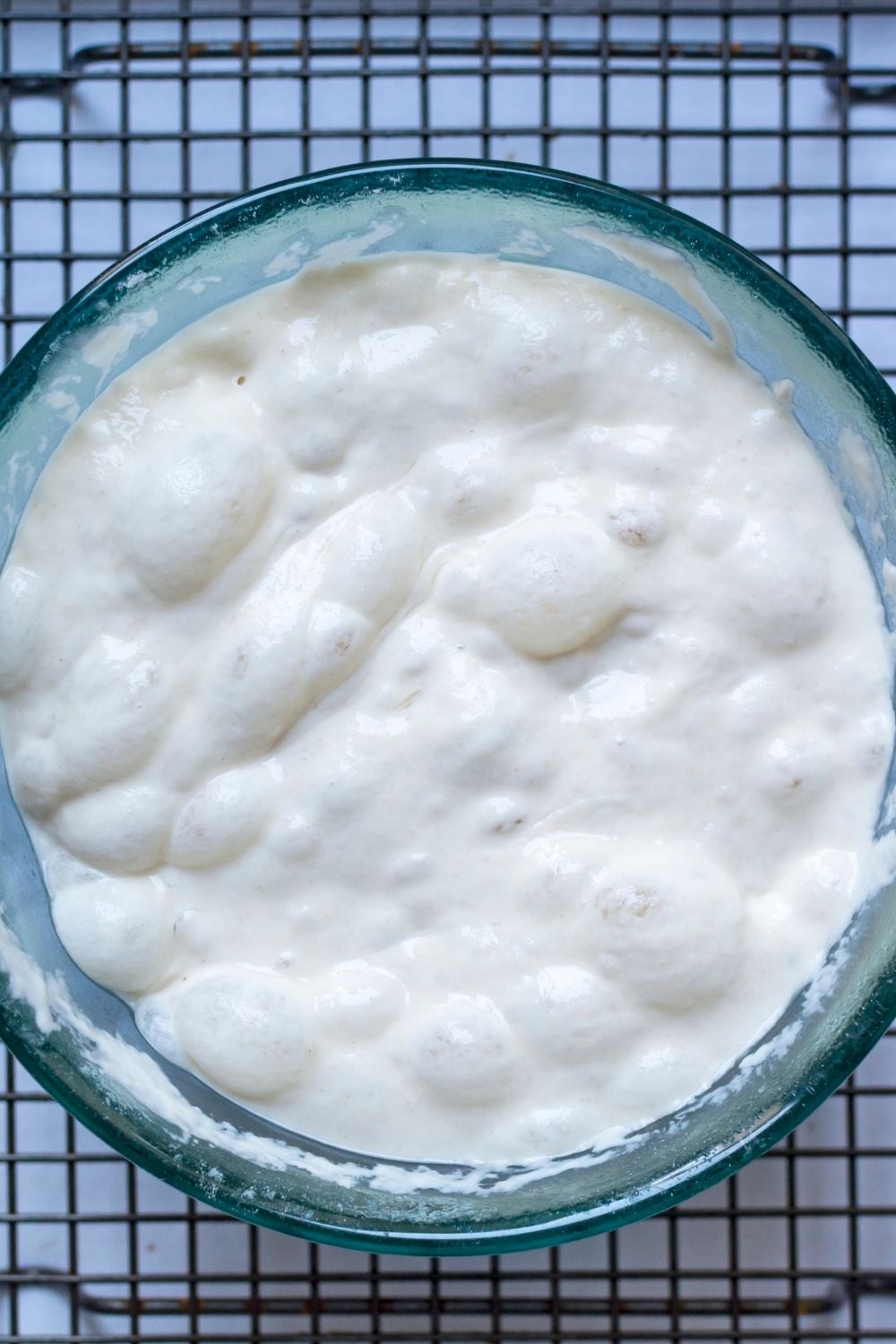
Image Credits: pantrymama.com
The funky smell indicates that your pizza crust will be delicious and crunchy. Now it is time to make the final dough using your poolish.
So, using a stand mixer to combine your ingredients is best since the poolish is wet and sticky. However, a spatula or a plastic spoon will do if you do not have the appliance.
Ingredients for the Final Dough
- 50og of the best pizza flour
- 100ml water at room temperature
- 1/2 a tsp of salt
- 0.5 g of dry yeast
Instructions
1. Transfer the Poolish
Transfer your poolish from its container to a stand mixer bowl, or if you don’t have one, you can use a large bowl. You can use a spatula or plastic spoon to scrap the poolish from the sides of the container since it is wet and sticky.

Image Credits: electricbluefood.com
If you have difficulty removing the poolish from the container, you can pour water into the container to free it from the sides and add it to the mixing bowl.
2. Add Measured Water, Flour, and Yeast, Then Knead Your Dough.
Mix the yeast, water, and flour, then add the mixture to your bowl with the poolish. If you use a stand mixer, set it to low speed and let it run for a minute until the poolish incorporates with the water.

Image Credits: amazinghomemadepizza.com
Add small portions of your flour as the mixer runs on low. When the dough starts to get firm, turn the speed up to medium and let it run for another 15 minutes
Since pizza dough is tough, you can divide it into two and mix it in two batches. Or you can also knead the dough using your hands when it starts to get firm.
3. Add Salt
When finalizing the kneading process, you can add salt and then knead it thoroughly until it incorporates. It is advisable to add salt as the last ingredient so that it does not affect gluten development. Using salt at the beginning will create a stronger and tighter gluten network, making it tough to mix in a stand mixer.
4. Let the dough rest

Image Credits: laurenslatest.com
When you have kneaded your dough perfectly, you can let it sit for 15-30 minutes. It helps the gluten relax, making the dough softer and pliable. Check on your dough after 30 minutes and fold it into a nice dough ball.
Looking for Extra Fermentation?
If you want your pizza crust to have a distinctive fermented taste, you can extend your fermentation time by leaving the dough for another two hours. Ensure you cover your dough with an airtight lid or use plastic wrap.
If you want the dough to be more flavorful, you can make it cold by fermenting it overnight in the refrigerator.
1. Divide the Dough
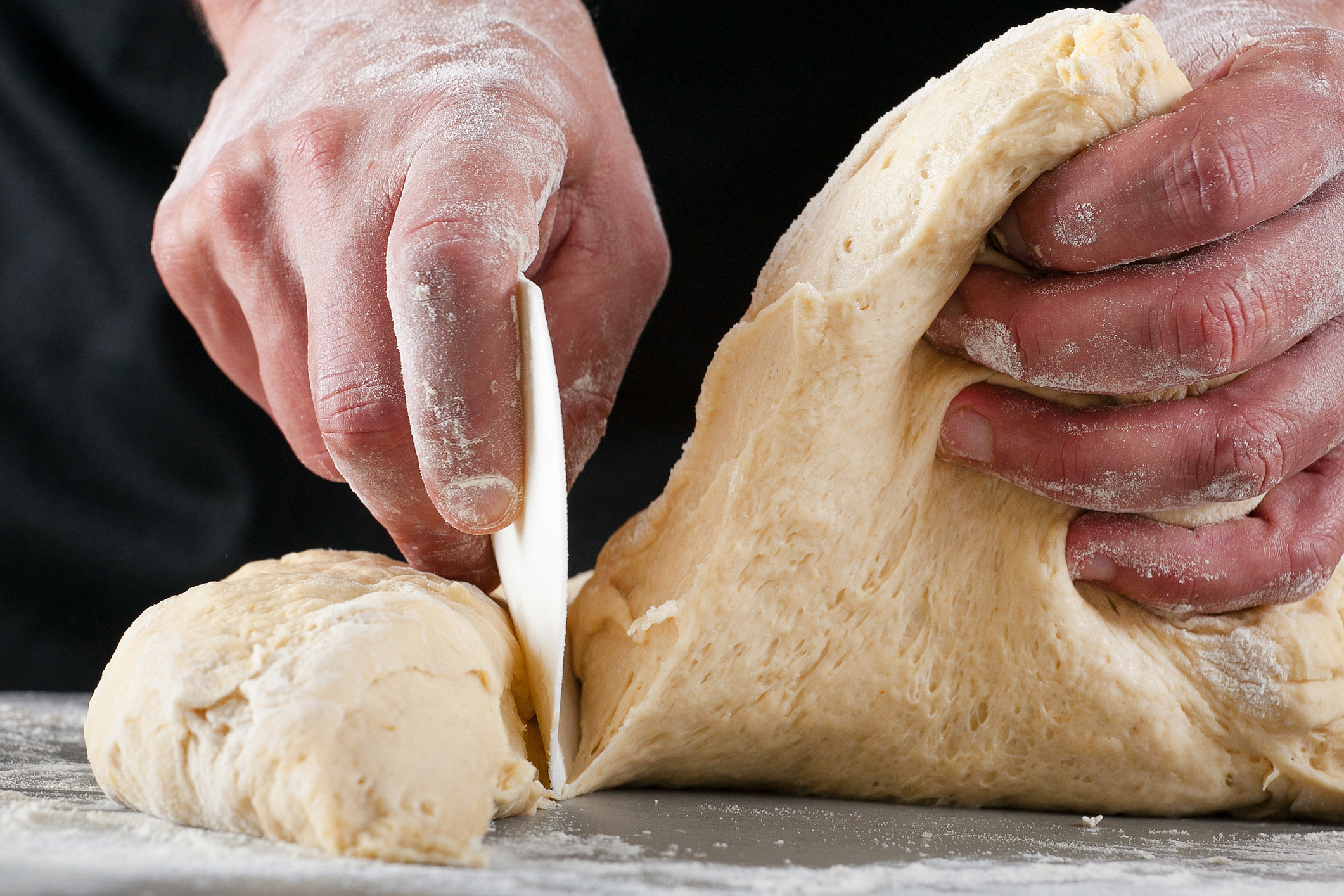
Image Credits: daubbaking.com
The next morning, you can take your dough out of the fridge and knead it into 4 equal balls. Each ball should be enough to make a Neapolitan pizza.
2. Ferment the Dough Balls
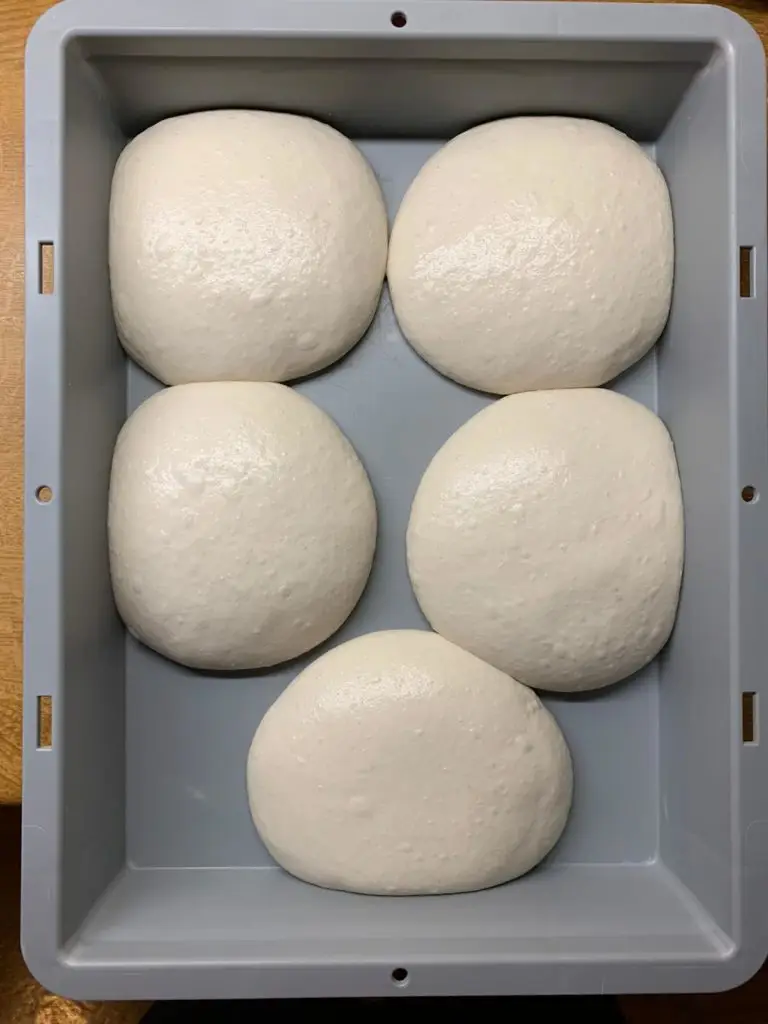
Image Credits: manopasto.com
If you are looking for excellent poolish pizza dough, you should further ferment the dough balls. Use a rising box or put them in airtight containers, then leave them for 8 hours.
After 8 hours, you can remove the dough balls from the containers and start making pizza. For a delicious pizza crust taste, use a wood-fired pizza oven, as it will give you a crusty and smokey taste and ensures your pizza cooks evenly.
Poolish Pizza Dough Timelines
Poolish pizza dough requires a lot of time to proof compared to regular pizza dough, which proofs within 2 hours. In addition, since it uses a small amount of yeast, it takes longer to ferment and rise. The timeline is as follows.
Begin by making the poolish; mixing the ingredients takes 5 minutes, which is an easy process. However, it is best to prepare it in the evening so you can leave it to rest overnight or for 24 hours. On the next day, make your normal pizza dough, then mix it with the poolish you made earlier.
Leave your dough to rest for another 5-7 hours; the longer you leave it, the better the results. Then, check whether your poolish dough is ready and make your pizza.
Tips for Making the Best Poolish for Pizza Dough
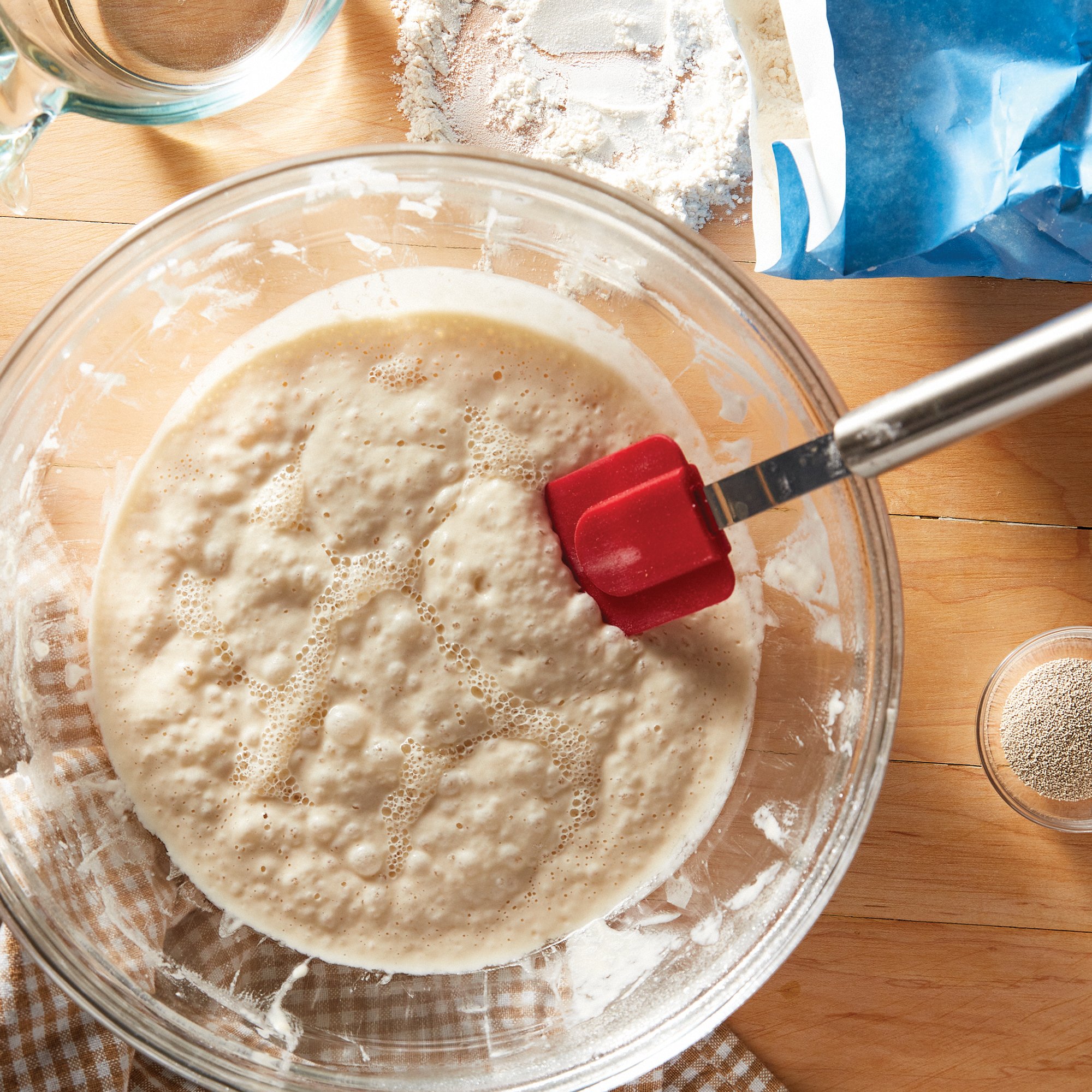
Image Credits: heb.com
- If you have refrigerated your poolish and want to use it immediately, add warm water to compensate for the cold temperature.
- You should mix salt and water before adding in your flour to help disperse the salt evenly throughout your dough.
- You should use olive oil or an oil of your choice to keep the dough from drying out or forming a crust while you leave it to rest.
- When preparing your dough balls, start spreading from the inside of the ball as you work your way out. The process pushes air out and ensures your crust comes out bubbly.
Benefits of Using Poolish for Your Pizza Dough
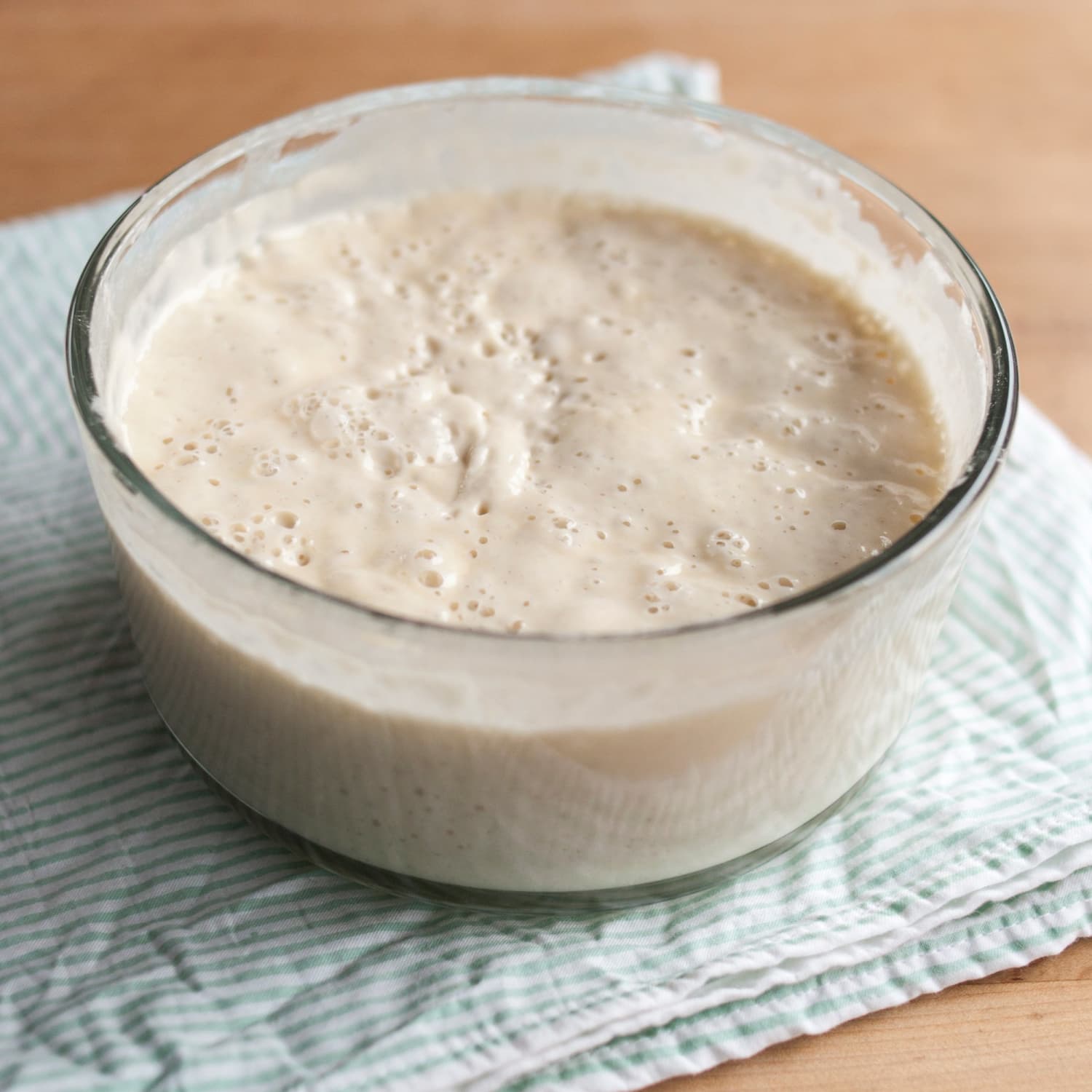
Image Credits: thekitchn.com
If you are undecided about whether to use poolish for your pizza dough, here are the advantages:
1. It Is Easy to Make
Poolish is one of the easiest pre-ferments you can make. It makes pizza making easier as it is in a more viscous form that makes it easy to mix with the ingredients of your main dough.
2. It Takes Less Time to Make
It is a quick pre-ferment that you can make in 5 minutes. In addition, its preparation is simple; you only need to let it sit for some hours before you start using it.
3. It Makes Meal Planning Easier
Most of the poolish pizza dough flavors are carried by this critical ingredient. That means you can prepare your main dough prior and then mix it directly into your poolish. In addition, poolish gives the main dough a longer fermentation taste than regular pizza dough. It is also the solution for people who don’t like a lot of yeast in their pizzas, as it raises the dough with minimal yeast.
Frequently Asked Questions on How to Make a Poolish for Pizza Dough
1. Is there a difference between a poolish and a sourdough starter?
People often need clarification on the difference between a poolish and a sourdough starter. Although similar, the two differ in many ways. For instance, a sourdough starter uses wild yeast to rise and ferment the dough, while poolish uses instant yeast.

Image Credits: Youtube.com
Also, a poolish is a simple mixture of flour, water, and yeast. On the other hand, sourdough consists of a levain, a mixture of sourdough starter, water, and flour. They have the same fermentation effects, only that in the sourdough levain, the wild yeast triggers the fermentation of the flour and water to deliver a sponge-like mixture that you add to your main dough.
2. Is using poolish for pizza dough worth it?
The main advantage of eating pizza made from poolish dough is that it makes your stomach feel less bloated. Also, fermenting a wheat product for a long time makes the end product easily digestible.
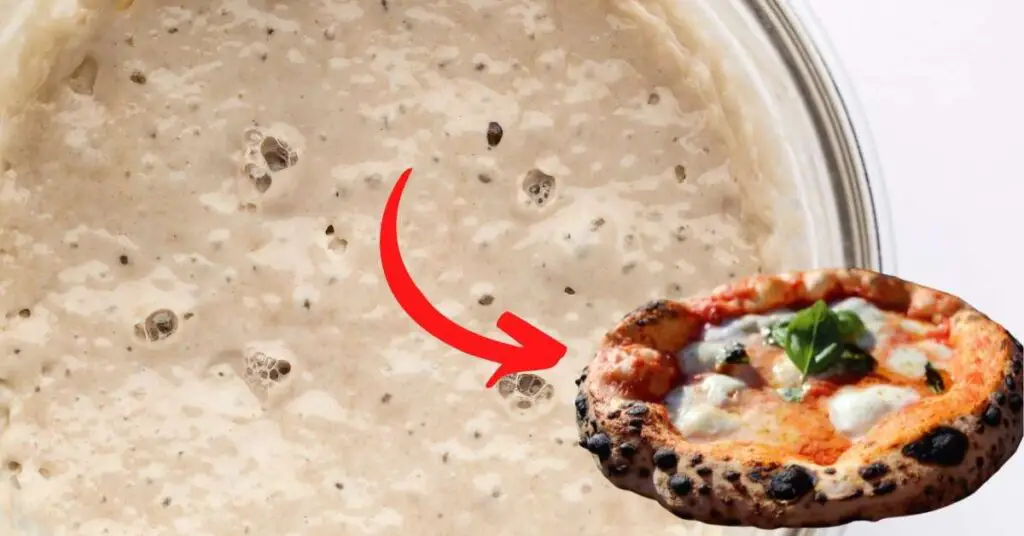
Image Credits: myhouseofpizza.com
Eating pizza may make you feel bloated since pizza has a high gluten content. However, pizza made using poolish or any other pre-ferment can make you feel less bloated and less full. You can even top your pizza with a cold beer, and you will not feel full.
Poolish takes only 5 minutes of preparation time and has less kneading time than kneading a regular pizza dough with instant yeast. This is because you leave the fermentation process to happen once you have mixed the ingredients. So a pizza dough with poolish takes a long time to prepare, but it takes less work than preparing a normal pizza dough recipe.
Featured Image Credits: bonappetit.com


